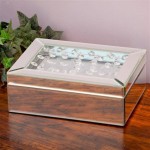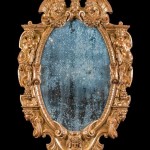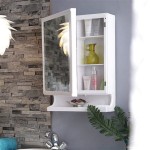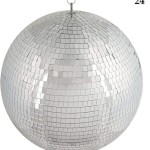Types of Mirrors Used in Cars
Mirrors play a crucial role in ensuring road visibility and enhancing driving safety. Cars employ various types of mirrors, each serving a specific purpose. Understanding the differences and functionalities of these mirrors is essential for safe and efficient driving.
1. Rearview Mirrors
Rearview mirrors, also known as interior mirrors, are located inside the car, typically above the windshield. They provide a wide-angle view of the area behind the vehicle. Rearview mirrors help drivers monitor following traffic, detect potential hazards, and maneuver in reverse.
2. Side Mirrors
Side mirrors are mounted on the exterior of the car, one on each side. They provide a view of the adjacent lanes and blind spots, allowing drivers to change lanes safely and avoid collisions. Side mirrors are often adjustable to optimize the viewing angle for the driver.
3. Convex Mirrors
Convex mirrors are often used as side mirrors due to their wide field of view. They provide a broader perspective compared to flat mirrors but distort the image, making objects appear smaller and farther away. The distortion helps reduce blind spots and enhances visibility.
4. Flat Mirrors
Flat mirrors, sometimes referred to as plane mirrors, are used for rearview mirrors. They reflect light without distorting the image, providing an accurate representation of the objects behind the vehicle. Flat mirrors offer a narrower field of view compared to convex mirrors but allow for more precise distance estimation.
5. Electrochromatic Mirrors
Electrochromatic mirrors, also known as auto-dimming mirrors, are equipped with light sensors that automatically adjust the reflectivity of the mirror surface. They reduce glare from headlights of following vehicles, enhancing visibility and reducing eye strain, especially at night.
6. Blind Spot Detection Mirrors
Blind spot detection mirrors, or wide-angle convex mirrors, are small additional mirrors attached to the side mirrors. They provide an extended field of view, reducing blind spots and helping drivers detect vehicles in their blind spots.
7. Heated Mirrors
Heated mirrors are equipped with heating elements that melt ice and snow from the mirror surface, improving visibility in cold weather conditions. Heated mirrors are particularly useful in areas experiencing heavy snowfall or freezing temperatures.
Conclusion
The variety of mirrors used in cars cater to different visibility needs, enhancing driving safety and convenience. Understanding the functions and characteristics of each type of mirror allows drivers to effectively utilize them for optimal road visibility and safe driving practices.

Why The Side Mirrors Majorly Of All Heavy Vehicles Are Small In Size Quora

Diffe Types Of Car Mirrors Ace Glass

Convex Mirrors Use Car

Difference Between Side Mirror And Rear View Learn Driving Tips

Types Of Mirrors In A Car Explained Learn Automatic
Diffe Types Of Car Mirrors Functions And Features Micmirror
Diffe Types Of Car Mirrors Functions And Features Micmirror

What Is A Convex Mirror And Where Do You Use It For Jeka

Side View Mirror Wikipedia

Car Mirrors Are A Very Important Part Of And With The Right Knowledge You Can Have Fulfilling Life 株式会社ネクスビジョン 自動車ミラー ガラス製ミラー製造 埼玉県川越市芳野台2 8 15








